Viewpoint: The Indian state to become a global leader in clean energy
- Published
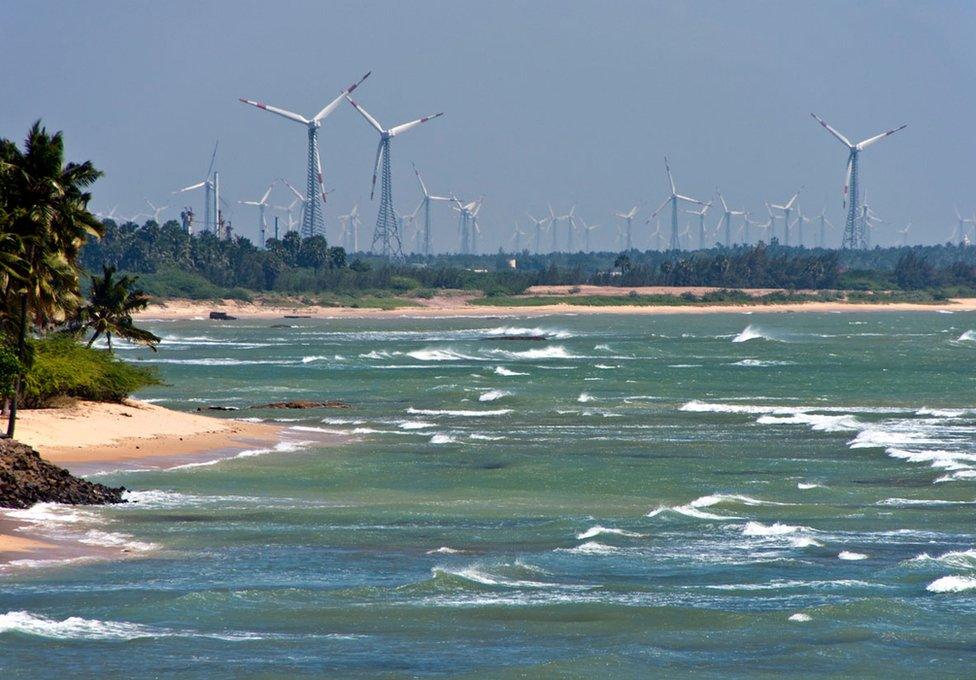
Tamil Nadu is expected to double its capacity to generate wind power
India's southern state of Tamil Nadu is poised to become a global leader in wind power, according to a new report. But first the state must overcome its addiction to coal, writes Nityanand Jayaraman.
The report - by the US-based Institute of Energy Economics and Financial Analysis - predicts that by 2027, more than half of Tamil Nadu's power will be generated by "zero emissions" technologies, external - notably solar and wind.
The state's current capacity to generate wind power - 7.85 gigawatts (GW) - is already impressive considering it is higher than that of Denmark or Sweden. But the report estimates that it could double over the next decade, and that solar installations too could increase six-fold to reach 13.5GW.
If that happens, clean, renewable energy would account for 67% of Tamil Nadu's capacity, which could revive the state's debt-ridden utility. But in order to harvest that potential, Tamil Nadu needs to transform its power sector.
Tamil Nadu's population is three times that of Australia and its per capita GDP is on a par with Sri Lanka and Ukraine. It could prove to be an example of how emerging economies can grow while slashing their carbon emissions.
Assuming Tamil Nadu's GDP will grow at an annual rate of 7%, the report suggests that much of this growth can be driven by renewables. Installation and operating costs for wind and solar power have dropped low enough to compete with established but dirty sources of power such as coal.
But that is where reality tempers the possibilities. The report argues that not only does Tamil Nadu not need coal or nuclear power, but that these projects are financially fraught.
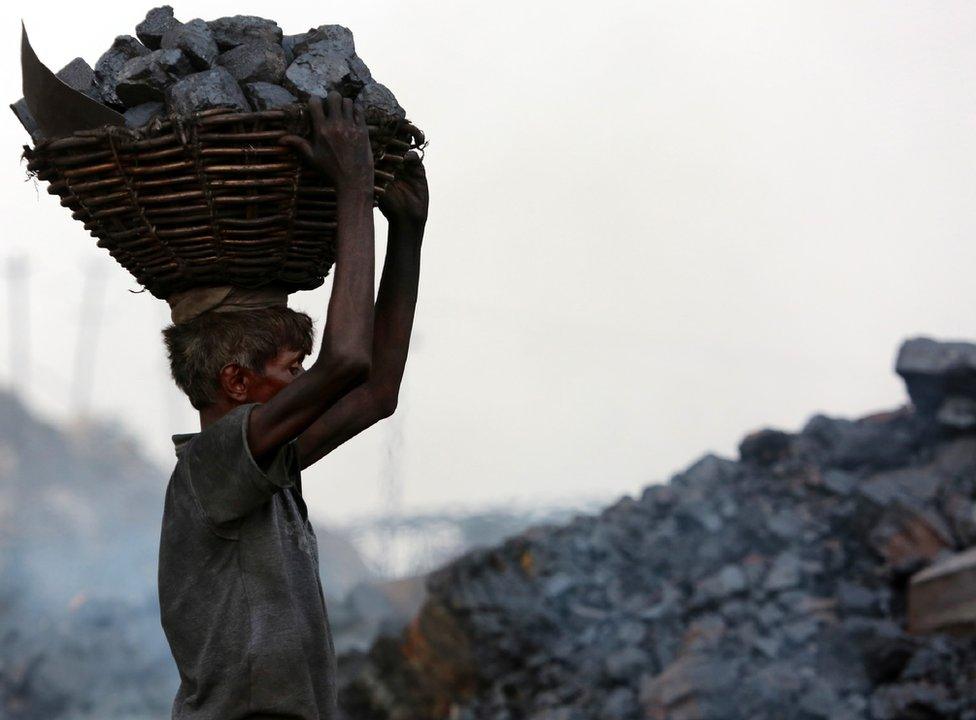
India is one of the largest producers of coal in the world
Electricity from new coal power plants is likely to be twice as expensive as solar or wind power. But, despite the bleak financial prospects, Tamil Nadu currently has 22.5GW of coal power plants in the pipeline.
Pursuing these ventures will weaken the state utility's finances and its ability to invest in smarter, cleaner alternatives.
There are other challenges too. Wind power can be generated only from May to October. Even during those months, production cannot reach its peak because the state does not have a large enough grid to convey excess electricity to other states. So, they will have to slow down generation from other sources.
This also means the state is unable to import cheap power from other states during the remaining seven months when wind power is not feasible. Work is afoot to change this but its not guaranteed that the improvements will ensure that the grid can cope with the predicted generation.
Integrating power from seasonal sources like wind requires a smart grid - one with a sophisticated system of supply and management that can adjust to variations in demand. On this count too, Tamil Nadu has a long way to go.
But the biggest limiting factor for the state is likely to be water.
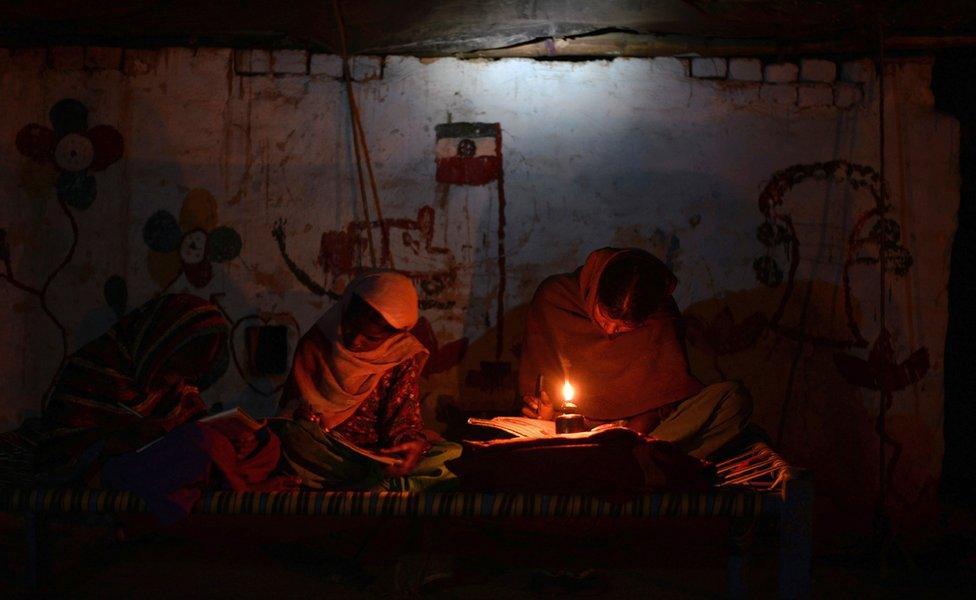
Around 300 million Indians still live without electricity
Between climate change and reckless exploitation and pollution of rivers, streams and lakes, Tamil Nadu is staring at a bleak water future. At least 60% of groundwater resources in the state are assessed as over-exploited, critical or semi-critical, external, according to India's Central Ground Water Board.
In April 2017, Tamil Nadu farmers camped out in India's capital, Delhi, staging dramatic protests - stuffing dead rats in their mouths, stripping themselves naked in front of Prime Minister Narendra Modi's home and drinking their own urine - to underscore the intensity of the drought back home.
In June 2017, villagers in Tamil Nadu's parched Ramanathapuram district were protesting against a solar power plant - they alleged that more than 200,000 litres of scarce water was being extracted illegally from bore wells, external to clean the 250,000 solar modules daily.
Utility-scale solar farms - massive projects that supply power to the gird - such as the one in Ramanathapuram need to be re-evaluated, especially if they are to run in areas where water is scarce.
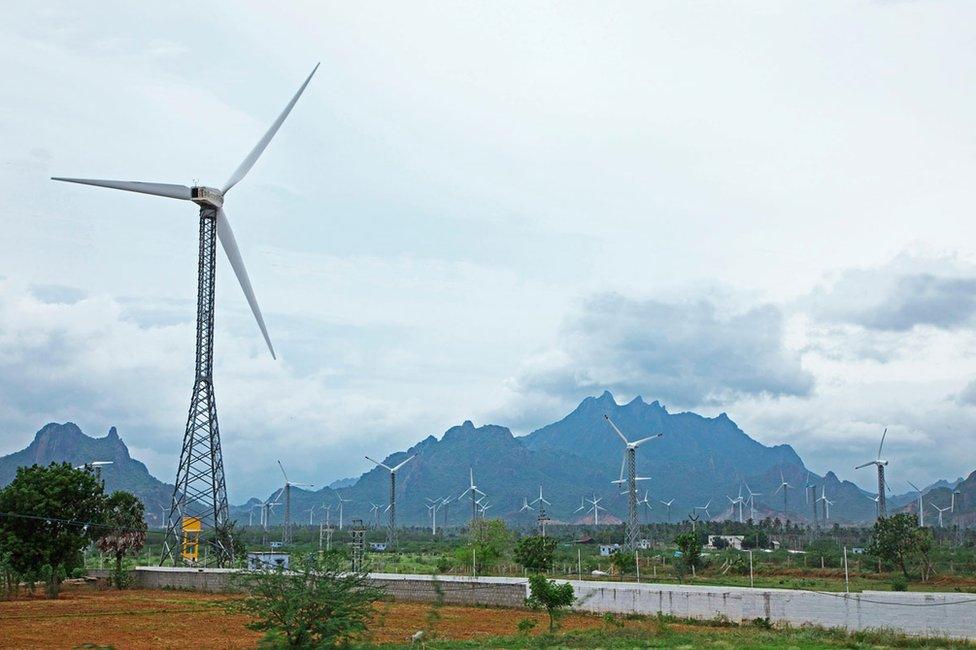
Electricity from new coal power plants will be twice as expensive as wind power
The report predicts that Tamil Nadu will have 10.3GW of utility-scale solar installations by the end of this decade and only about 2GW of rooftop installations.
Given that both the availability of sunlight and the demand for electricity are decentralised, it makes sense to maximise rooftop solar installations rather than to invest in large solar parks.
The overall direction, if not the magnitude and rate of change, laid out in the report is not just possible but essential both financially and environmentally.
A healthy and environmentally sustainable future requires more than just switching from dirty coal to wind or solar power.
But the bigger challenge lies not in decoupling growth from carbon emissions but in decoupling human wellbeing and progress from growth.
Nityanand Jayaraman is a Chennai-based writer and social activist.
- Published5 July 2016

- Published25 November 2015
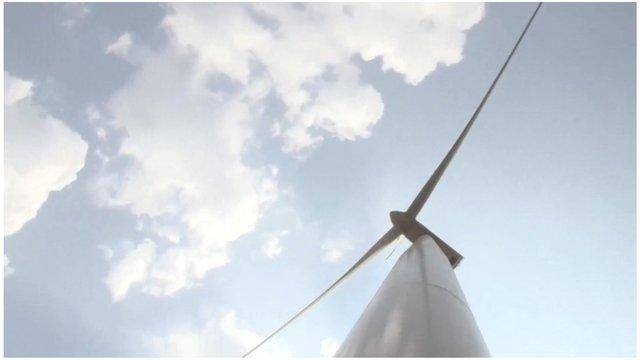
- Published3 January 2017
